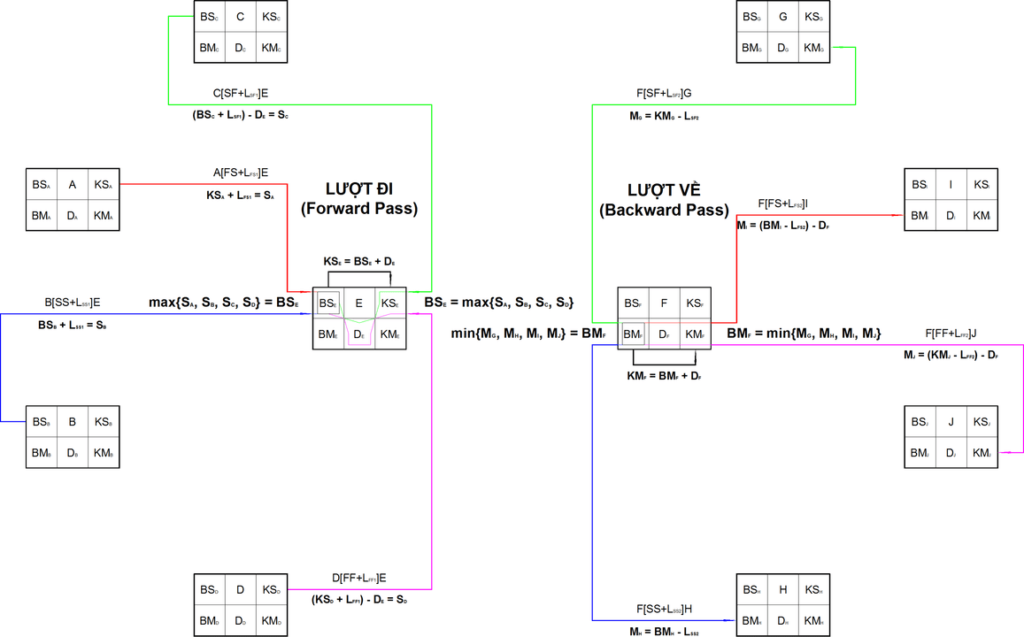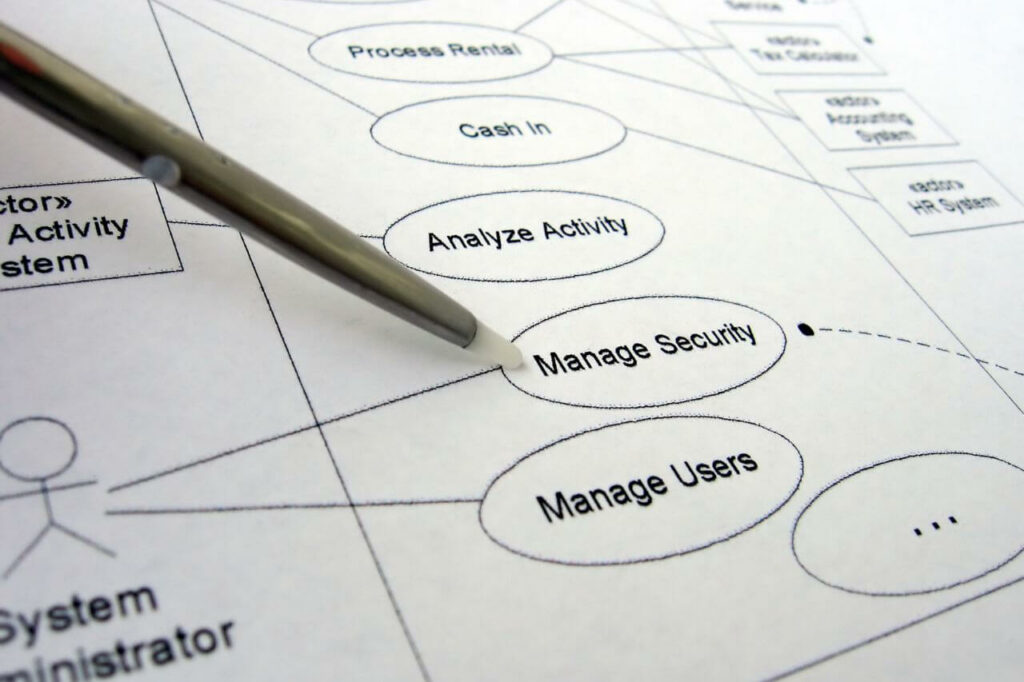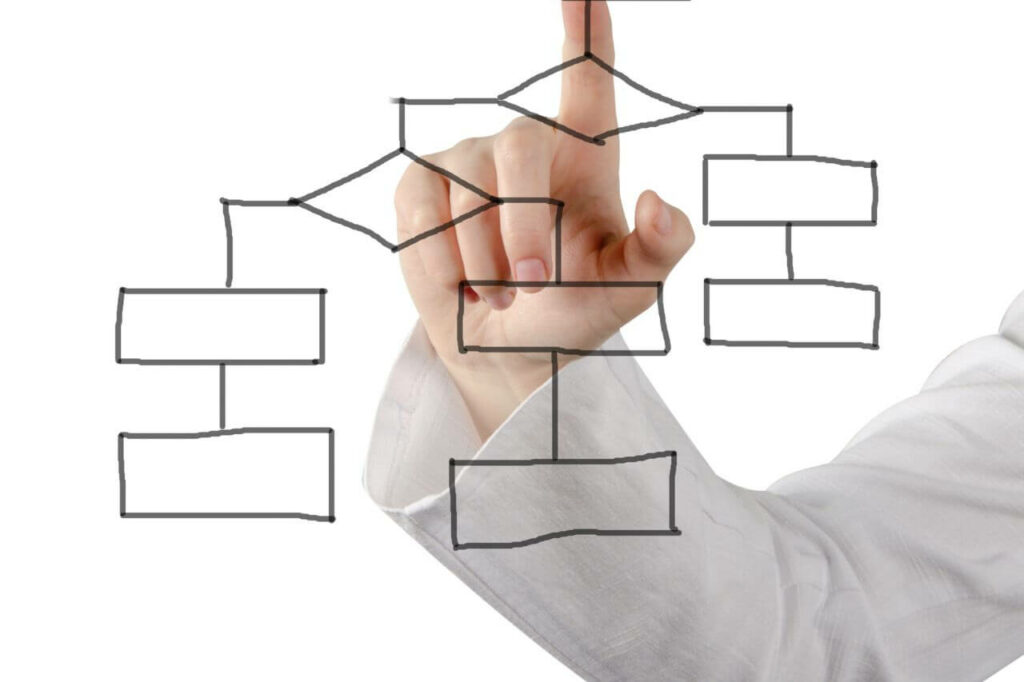For any organization seeking to deliver value, achieving this goal largely relies on delivering projects that are vehicles for business value.
Project management which is an essential part of any successful business involves the planning, organizing, and managing of resources to achieve the desired goals of a project.
To ensure the efficient and effective management of resources, project managers need to use the right tools and techniques.
One such tool is the Precedence Diagramming Method (PDM), which helps project managers to break down complex tasks into smaller, manageable activities.
In this blog post, we will discuss the Precedence Diagramming Method, how it’s used in project schedule management, and its advantages and limitations.
We will also provide an example of how to use PDM in an IT project. Finally, we will look at alternatives to PDM and compare it to other project management tools such as Gantt charts.
What Is Precedence Diagramming Method (PDM) in Project Management?
Precedence Diagramming Method (PDM) is a graphical technique used to identify activities needed to complete a project, as well as their interdependencies in order to sequence the activities.
PDM is a powerful planning tool for project schedule management that can be used to organize and coordinate the efforts of a project team, describe the project and its activities, and convey the project’s plan to stakeholders.
At its core, PDM focuses on establishing the relationship between tasks or activities in the project.
This is done by determining which tasks need to be completed before and after others, as well as which tasks can be completed at the same time.
Once the relationships between tasks are determined, it’s easier to optimize how these tasks are planned, organized, controlled, and monitored.
In PDM, tasks are represented as nodes in a graph, and the arrows connecting tasks depict the precedence, or order of tasks that must take place for the project to be successful.
PDM knowledge is important for you as a project manager, and if you are preparing for the Project Management Professional (PMP) certification.

What Is a Precedence Diagram?
A precedence diagram is a visual representation of how a project’s activities are related to one another.
It can show how the activities depend on each other and what order they need to be completed.
A precedence diagram shows which tasks need to be completed first, which tasks might have to wait until other tasks are finished, and which tasks can run simultaneously.
The diagram is used to plan and manage the project, ensuring that tasks are completed in the most efficient order.
It’s also used to anticipate potential problems and establish contingency plans.
How to Draw a Precedence Diagram
To draw a precedence diagram, begin by creating a list of the tasks that need to be done.
Analyze the list and determine the dependencies between tasks to know which tasks need to be done before others in order to be completed successfully.
Use arrows to show the direction of the dependent tasks. Each task should be represented by a square or rectangle.
Then, determine the duration of each task. This will help you determine the overall duration of the order of tasks.
Include the duration in the diagram, labeling each task and its duration with the start and end dates.
Finally, use this information to construct the precedence diagram. Label each task with its duration and indicate the order of tasks by connecting them with arrows.
Add additional nodes to represent the beginning and end dates of each task. This will create a visual representation of the project timeline with arrows to represent the order of tasks and their corresponding durations.
A precedence diagram is a versatile tool, useful for understanding the project timeline, dependencies, and resources needed for successful completion.
By following these steps, you can draw a diagram that will help you stay organized and on track for completing the project.

What Are the Types of Dependencies in the Precedence Diagramming Method (PDM)?
There are four primary types of dependencies in the Precedence Diagramming Method (PDM): Finish-to-start, Start-to-start, Finish-to-finish, and Start-to-finish.
1. Finish-to-Start (FS)
Finish-to-start (FS) is the most commonly used type of dependence. This type of relationship means that one activity must finish before another can start.
It illustrates the sequence of activities, allowing the project manager to understand the sources of delays in the project timeline.
2. Start-to-Start (SS)
Start-to-start (SS) is the second type of dependency. This type of relationship ties activities together in a way that the start of one activity is linked to the start of another.
By doing this, the start times of both activities must be coordinated in order for the project to be completed on time.
3. Finish-to-Finish (FF)
The third type of dependence is Finish-to-finish (FF). This relationship means that one activity must finish before another can finish.
This type of dependence helps to ensure that certain tasks are done in a certain order so that the project timeline is not disrupted.
4. Start-to-Finish (SF)
The last type of dependence is Start-to-finish (SF). This relationship ties the start of one activity to the completion of another.
This is typically used when there are resources available early in the project timeline that must be done before the project can be completed.
By coordinating the start and finish of activities, the project manager can better understand how to utilize the available resources and optimize the project timeline.

What are the Types of Dependencies in Project Management?
Now that you have a clear idea of the dependencies in the Precedence Diagramming Method (PDM), it’s also important that you know the 4 types of dependencies in project management.
Project management involves a wide range of activities and tasks, and these tasks often have connections and dependencies between them.
A dependency is a relationship between tasks that can either be mandatory or discretionary.
Depending on the type of dependency, there can be different kinds of outcomes. In this section, we’ll look at the types of dependencies that exist in the world of project management.
1. Mandatory Dependency
Mandatory Dependencies occur when the order of tasks and the timing of those tasks are predetermined.
This means that the project is limited to following the predetermined tasks and cannot move on until the tasks that lead up to it have been completed.
Mandatory dependencies are usually only found in linear tasks or activities.
2. Discretionary Dependency
Discretionary Dependencies are flexible because they allow for changes in how the tasks are related to each other.
These dependencies are based on experience and expertise and are usually based on the judgment of an experienced project manager.
These discretionary dependencies usually allow for the completion of tasks in the least amount of time while still maintaining quality.
3. External Dependency
External Dependencies occur when the completion of one task is dependent on something outside of the project.
This could be something like waiting for approval on a purchased resource or approval from a government body.
It’s important to take into account external dependencies when planning a project, as they can delay the completion of the project.
4. Internal Dependency
Internal Dependencies occur when the order of task completion depends on each other for efficiency.
This means that there are tasks that rely on each other for completion before the next task can be completed.
It’s important to identify these internal dependencies to ensure the project is completed efficiently and on time.
These are just a few types of dependencies in project management and it is important to take them into consideration when planning a project.
Both mandatory and discretionary dependencies can affect the outcome of the project, while external and internal dependencies can delay the project or make it inefficient.
As a project manager, you must carefully consider these dependencies when planning a project to ensure it’s successful.

Precedence Diagramming Method Example
To better understand how the Precedence Diagramming Method (PDM) works, let’s look at an example project schedule for building a house:
Activity A: Obtain a building permit
Activity B: Clear the construction site
Activity C: Lay the foundation
Activity D: Build the framework
Activity E: Install plumbing and electrical systems
Activity F: Install windows and doors
Activity G: Install roofing
Activity H: Install insulation
Activity I: Install drywall and paint
Activity J: Install flooring and trim
Activity K: Install fixtures and appliances
In this example, Activity A is a predecessor to Activity B, since the building permit must be obtained before the construction site can be cleared.
Activity B is a predecessor to Activity C since the construction site must be cleared before the foundation can be laid.
Similarly, Activity C is a predecessor to Activity D, and so on.
To create a Precedence Diagramming Method (PDM) diagram for this project, we would start by drawing a box for each activity, labeled with its name and duration.
Then, we would draw arrows between the boxes to show their dependencies, with the predecessor activity on the left and the successor activity on the right.
For example, we would draw an arrow from Activity A to Activity B, to show that Activity B depends on Activity A.
We would draw an arrow from Activity B to Activity C, to show that Activity C depends on Activity B.
And so on, until we have a complete diagram of the project schedule.
By using the Precedence Diagramming Method (PDM) to create a project schedule, we can identify the critical path of the project, which is the sequence of tasks that must be completed on time in order for the project to be completed on schedule.
We can also identify any tasks that can be delayed without delaying the overall project timeline and adjust the project schedule accordingly.

Benefits of the Precedence Diagramming Method
The Precedence Diagramming Method (PDM) is a project scheduling technique that uses visual diagrams to show project activities and the order in which they are to be completed.
This method is especially useful for complex projects with multiple activities that must be undertaken in the correct order to achieve success.
Here are some of the benefits of the PDM:
1. Ease of Use
PDM is very easy to use, even for those with no formal training in project management. All that’s needed is a list of activities and the duration of each to create a visual diagram of the project.
This graphical representation makes project management easier to comprehend and provides an overview of the project timeline.
2. Improved Estimation
Since PDM visually displays the project timeline, it can be used to accurately estimate the time required to complete the project.
This helps managers to effectively plan for the resources needed and to more accurately determine project costs.
3. Improved Control
PDM makes it easier for project managers to spot problems with progress and make subsequent changes as required.
The visual diagram also makes it easier to identify areas of potential risks and opportunities.
4. Increased Efficiency
By organizing the project into easily understandable visual diagrams, it’s easier to identify any potential bottlenecks and make the necessary changes to ensure the project is completed on time and within budget.
Overall, the benefits of PDM include improved estimation, improved control, and increased efficiency, making it a useful tool for project management.

Limitations of the Precedence Diagramming Method
The Precedence Diagramming Method (PDM) is a popular project management tool used to visualize the activities and tasks involved in completing a project.
While PDM offers several advantages, it isn’t without limitations.
One significant limitation of PDM is its reliance on accurate data input. The accuracy of the project timeline and resource allocation depends on the accuracy of the data input into the PDM.
If the data is incomplete or inaccurate, the resulting project timeline may be flawed, and the project may be delayed or over budget.
Another limitation of PDM is its complexity. PDM requires a significant amount of time and effort to create a comprehensive project plan.
It requires input from multiple stakeholders, and the process can be time-consuming and cumbersome. Additionally, creating and maintaining a PDM chart may require specialized software and training.
PDM also has limitations in its ability to represent non-linear relationships between project activities.
The method assumes a linear relationship between activities, where one task must be completed before the next can begin.
However, this may not always be the case, and some activities may be completed concurrently or with overlap.
PDM may not accurately reflect these complex relationships, leading to inaccuracies in the project timeline.
Finally, PDM does not provide a clear indication of the critical path, which is the sequence of activities that must be completed on time for the project to be completed on schedule.
Identifying the critical path is essential for effective project management, but PDM does not provide an explicit way to identify it.
This can make it challenging to determine where to focus resources and effort to keep the project on track.
Despite its limitations, PDM remains a popular project management tool due to its ability to visually represent project activities and dependencies.
However, it’s important to recognize these limitations and use PDM in conjunction with other project management tools and techniques to ensure the project’s success.

Alternatives to the Precedence Diagramming Method
While the Precedence Diagramming Method (PDM) is a popular project management tool, it is not the only method available.
Several alternative methods are available to project managers looking to plan and execute projects effectively.
Here are a few examples of alternatives to PDM:
1. Critical Path Method
The Critical Path Method (CPM) is a method that focuses on identifying the critical path, and the sequence of activities that must be completed on time for the project to be completed on schedule.
It uses a network diagram to show the relationships between activities and calculates the project’s duration based on the critical path.
CPM is an excellent alternative to PDM, especially when dealing with projects that have many dependencies and complex relationships.
2. Agile Methodology
Agile methodology is a project management approach that emphasizes flexibility and adaptability. It is particularly useful for projects that are constantly changing or have a lot of uncertainty.
Unlike PDM, which is a linear process, Agile methodology is iterative, and the project plan is continually updated based on new information and feedback.
3. Gantt Charts
Gantt charts are another popular project management tool that’s often used in conjunction with PDM.
A Gantt chart is a visual representation of a project schedule, showing the start and end dates of each task and how they relate to each other.
Gantt charts are particularly useful for projects that have a lot of tasks that can be completed in parallel, as they allow project managers to see the entire project timeline at a glance.
4. Program Evaluation and Review Technique (PERT)
Program Evaluation and Review Technique (PERT) is a method that focuses on estimating the time required to complete each project task.
It uses three estimates for each task: the best-case scenario, the worst-case scenario, and the most likely scenario.
PERT then calculates the expected time for each task based on these estimates, taking into account the dependencies between tasks.
PERT is particularly useful for projects that have a lot of uncertainty or where the duration of each task is difficult to estimate accurately.

What is the Difference Between Precedence Diagramming Method (PDM) and Activity On Node (AON)?
The Precedence Diagramming Method (PDM) and Activity-on-Node (AON) are both project management techniques used to create project schedules and analyze task dependencies.
The main difference between PDM and AON is the way they represent task dependencies.
PDM uses boxes, called nodes, to represent activities, and arrows to show dependencies between the activities.
AON, on the other hand, uses nodes to represent the start and end points of activities, and arrows with circles to represent dependencies between activities.
While both methods have their own advantages and disadvantages, they are largely interchangeable and can be used in similar ways to create project schedules and analyze task dependencies.

Precedence Diagramming Method (PDM) vs Critical Path Method (CPM)
The Precedence Diagramming Method (PDM) and the Critical Path Method (CPM) are both used to develop project plans.
Both involve breaking the project into tasks and then determining the sequence of tasks required to complete the project.
PDM is a graphical approach that’s easy to understand and use, while CPM is a more mathematical approach.
PDM is used to create a visual representation of the project’s tasks. In PDM, tasks are depicted as rectangles, and arrows are used to depict the sequences of tasks.
The arrows also show the dependencies between tasks, and the lengths of the arrows indicate the duration of each task.
PDM is beneficial for getting an overall view of the project but may not be as accurate as other methods.
CPM uses calculations to determine the least amount of time the project will take to complete. CPM defines a critical path, which is the longest possible path through the project.
This allows the user to identify the most important tasks, and concentrate resources on them. CPM is more accurate than PDM but can be more difficult to understand and use.
Overall, both PDM and CPM can be used effectively to develop project plans. The decision of which to use will depend on the project itself and the user’s skill level.

Precedence Diagramming Method (PDM) vs Program Evaluation and Review Technique (PERT)
Two popular project management techniques are Precedence Diagramming Method (PDM) and Program Evaluation and Review Technique (PERT).
While both methods are used to plan and execute projects, they have different approaches and are suitable for different types of projects.
Precedence Diagramming Method (PDM) is a project management technique that uses a network diagram to show the relationships between activities and tasks.
It assumes that there is a linear relationship between activities, where one task must be completed before the next can begin.
PDM is often used to plan and execute projects with a defined scope and a fixed timeline, such as construction projects.
On the other hand, Program Evaluation and Review Technique (PERT) is a project management technique that focuses on estimating the time required to complete each task.
PERT uses three estimates for each task: the best-case scenario, the worst-case scenario, and the most likely scenario.
It takes into account the dependencies between tasks and calculates the expected time for each task based on these estimates.
PERT is often used for projects with a lot of uncertainty or where the duration of each task is difficult to estimate accurately, such as research and development projects.
PDM and PERT also differ in their approach to critical path analysis. PDM does not provide a clear indication of the critical path, while PERT uses the expected time for each task to calculate the critical path.
Identifying the critical path is essential for effective project management, as it helps project managers determine where to focus resources and effort to keep the project on track.
Another difference between PDM and PERT is in their level of complexity. PERT can be more complex than PDM, as it requires multiple estimates for each task and can be time-consuming to create.
PDM, on the other hand, is often simpler and quicker to create, as it only requires identifying the relationships between tasks and activities.
Conclusion
In conclusion, precedence diagrams are an essential tool for project managers. They provide a clear visual representation of the project, which makes it easier to understand and interpret the project.
They also help to identify the critical path of the project and the activities that have slack. Finally, they are a simple and efficient way to break down complex tasks into smaller, manageable activities.
FAQs
What is PDM Best Suited For?
The Precedence Diagramming Method (PDM) is best suited for projects with well-defined tasks and a clear understanding of task dependencies, where the focus is on the logical sequencing of tasks rather than their duration.
What is PERT Best Suited For?
PERT is best suited for complex projects with a high degree of uncertainty in estimating the duration of tasks, such as research and development projects.
Is PERT Still Used?
Yes, PERT is still used today as a project management tool, particularly for complex projects with high levels of uncertainty in estimating task durations.
It’s a valuable technique for analyzing the critical path of a project and identifying the most critical tasks that may impact the overall project timeline.





